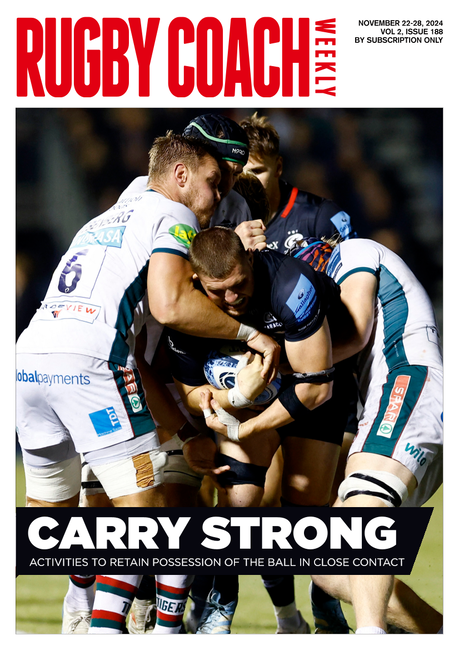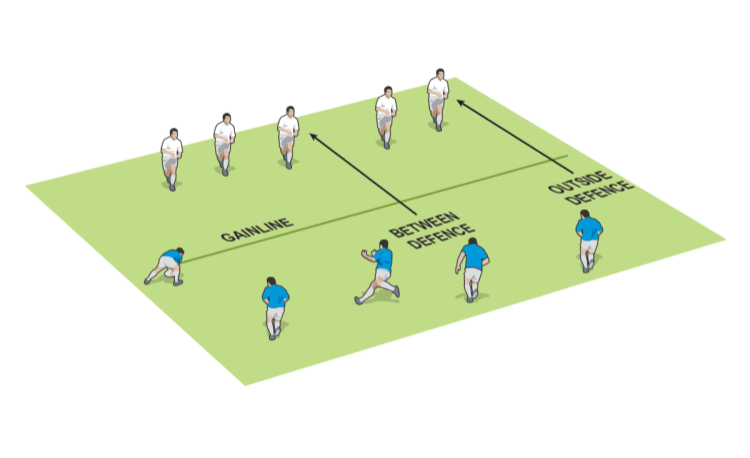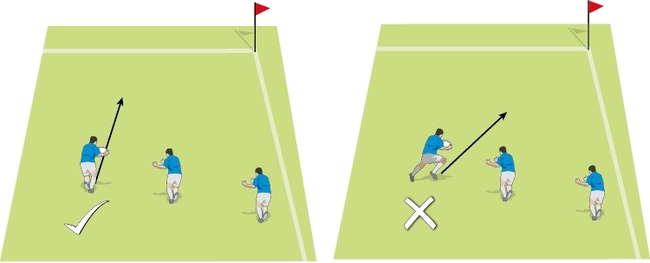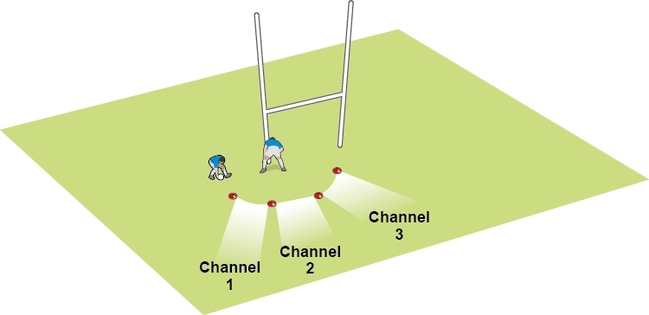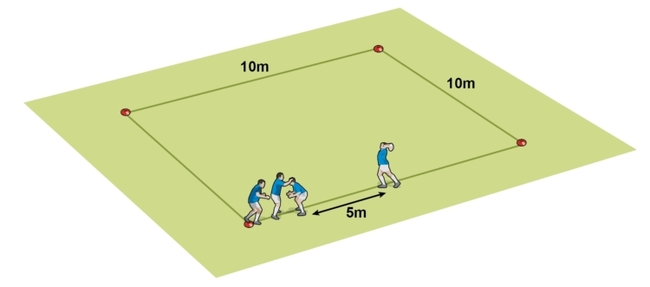Slow ball plays

When you can’t clear the ball from a ruck quickly, you need to have some easy set-ups so you can restart your attack. Translate these plays effectively from drawing board to training to matches.
It’s easy to define the length of time before a ruck becomes regarded as slow. It is the length of time it takes for the defence to get reorganised. At the top level, this is a matter of a few seconds, while at the lowest end of the game, it might not even happen at all.
So, these “restart” plays are only appropriate if you are faced with teams organising their defences effectively. In other words, they put players on either side of the ruck and then spread out across the field. Against this, try to run the ball any wider than three passes from the ruck, and your team will be tackled a long way back from the gain line, with more chances of a turnover against you.
Though you could risk going wide, the two most realistic options are to kick or recreate quick ball. Tactically, kicking away slow ball is risky. The defence is likely to be in position to deal with your kick. It’s always better to kick quick ball.
You can see that you are probably down to one option. Create quick ball. Quick ball means defenders are out of position. The most dangerous quick ball is when you are going forward too. That means you are getting over the gain line, and so defenders must go backwards before they can re-position themselves for the next play.
While we would love to be able to penetrate the line with every play, that’s not always possible. But a good dent makes a difference. A “dent” means the ball carrier at least meets the opposition on the gain line and with good footwork, might be able to steal half a metre. Some sides use a “latch”, where the ball carrier is driven through the gain line.
Whichever one you prefer, you need to have at least one, but better two support players close by to deal with the threats to the ball. That’s why it takes a little bit of organisation. Use the session on Ruck transformers to improve your play.
ESSENTIALS
A short, fast and flat pass from the base of the ruck
The ball must be in the air for the least amount of time, and as close to the gain line as possible, so the receiver has less distance to travel. The more time in the air, the more chance the opposition has to be in position. It must be straight from the base, not picked up, and passed for the same reason.
Little or no run-up from the receiver
The receiver moves forward with the pass, not before the pass. This removes some of the risks of timing. It also allows the receiver to be more balanced.
Related Files
Newsletter Sign Up
Coaches Testimonials

Gerald Kearney, Downtown Las Vegas Soccer Club

Paul Butler, Florida, USA

Rick Shields, Springboro, USA

Tony Green, Pierrefonds Titans, Quebec, Canada
Subscribe Today
Be a more effective, more successful rugby coach
In a recent survey 89% of subscribers said Rugby Coach Weekly makes them more confident, 91% said Rugby Coach Weekly makes them a more effective coach and 93% said Rugby Coach Weekly makes them more inspired.
Get Weekly Inspiration
All the latest techniques and approaches
Rugby Coach Weekly offers proven and easy to use rugby drills, coaching sessions, practice plans, small-sided games, warm-ups, training tips and advice.
We've been at the cutting edge of rugby coaching since we launched in 2005, creating resources for the grassroots youth coach, following best practice from around the world and insights from the professional game.


